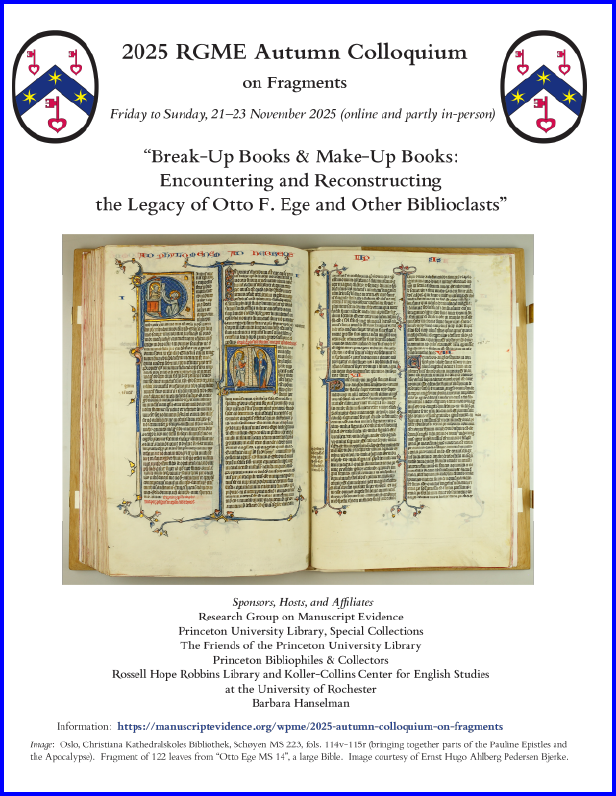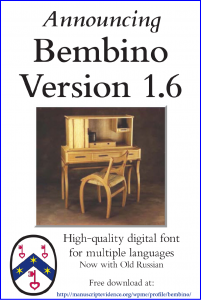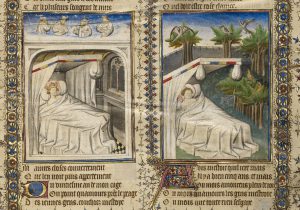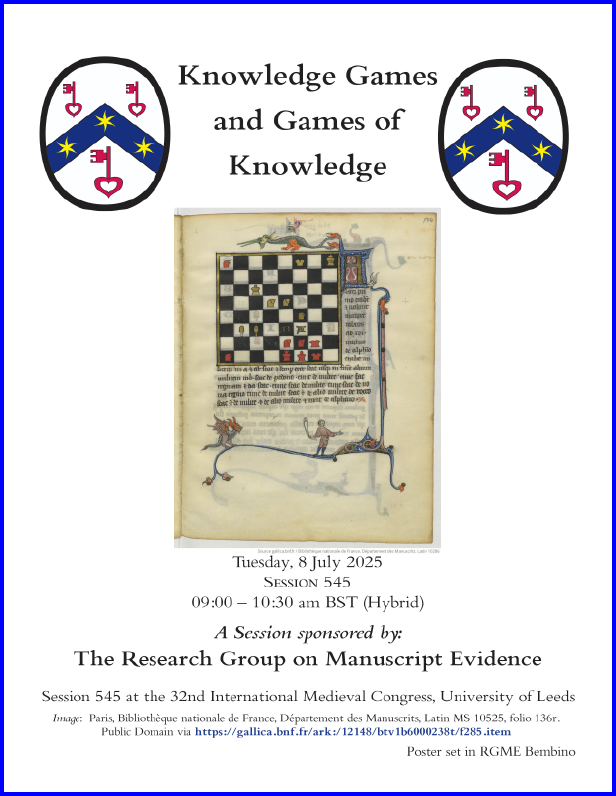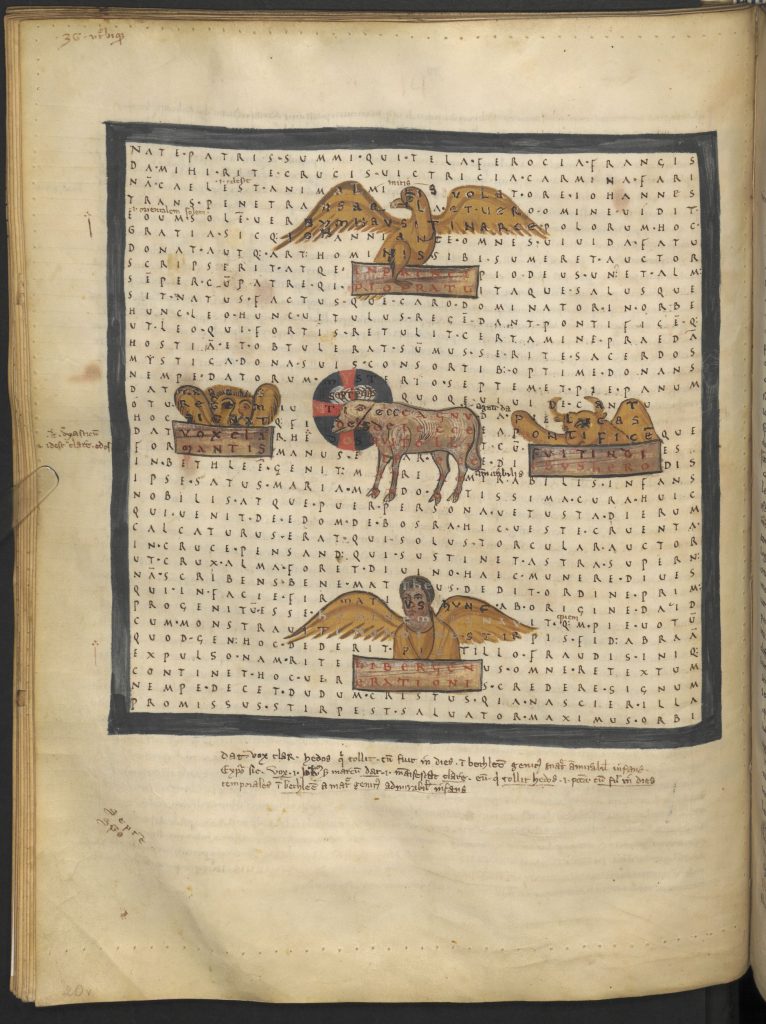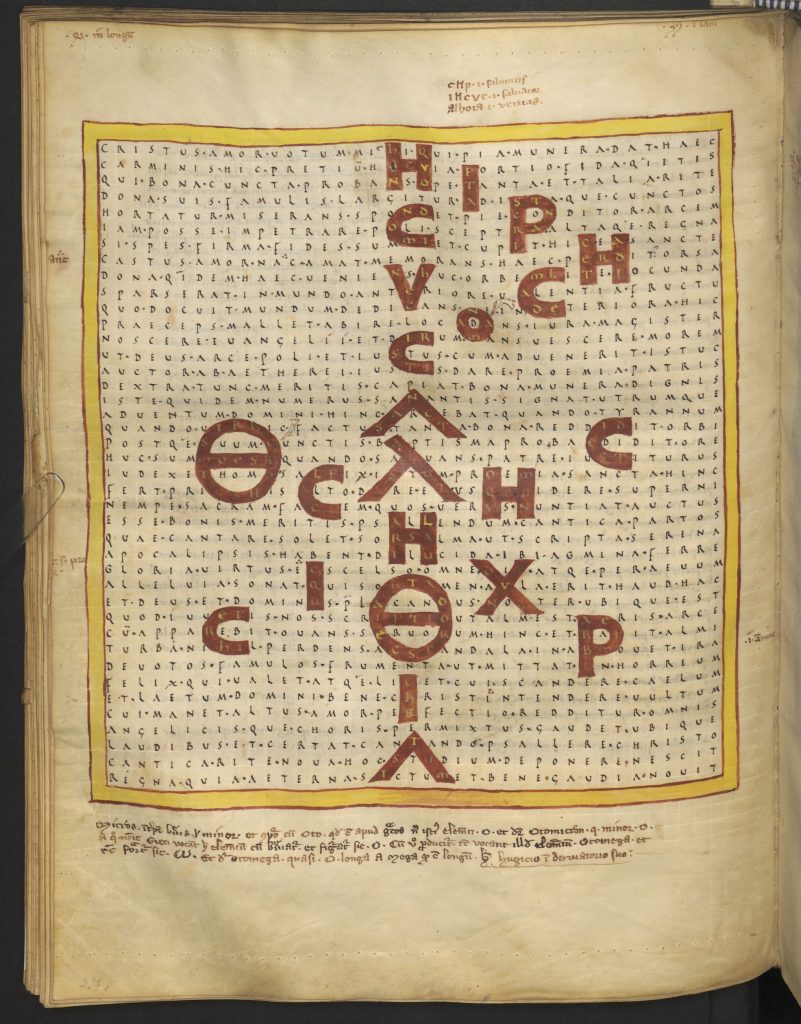Detailed Program
“Break-Up Books and Make-Up Books:
Encountering and Reconstructing
the Legacy of Otto F. Ege
and Other Biblioclasts”
Friday – Sunday, 21-23 November 2025
In Person, Hybrid, or Online by Zoom
Program
I. Program Overview
Day 1. Friday 17 October. 9:00 am – 5:00 pm EST (GMT-5)
— NOTE TWO DIFFERENT VENUES FOR FRIDAY Morning and Afternoon —
Morning Sessions at Green Hall (accessibility information). 9:00 am – 12:00 pm
Washington Road, Princeton, New Jersey 08542
Lunch Break. 12:00–1:00 pm
Afternoon Workshops with original materials at Special Collections, Firestone Library
(accessibility information)
Choose 1 of 2 (space is limited for in-person attendance)
2 Sittings:
1) Workshop 1. 1:30–3:00 pm (arrive at Firestone Library at 1:15 pm)
2) Workshop 2. 3:30–5:00 pm (arrive at Firestone Library at 3:15 pm)
Day 2. Saturday 18 October. 9:00 am – 5:00 pm
All-day Sessions at Nassau Presbyterian Church
(see also Nassau Presbyterian Church)
61 Nassau Street, Princeton, 08542
Accessibility information.
(Note: The original portion of the present building was designed and built by Charles Steadman and dedicated in 1836.)
Day 3. Sunday 19 October at 10:30am – 12:00am
Morning Sessions online. 10:30 am – 12:00 pm
Registration
1) ONLINE (Friday to Sunday)
2) IN PERSON (Friday and Saturday)
3) IN PERSON WORKSHOPS 1 and 2 at Special Collections (Friday afternoon)
(Space IN PERSON is limited; the Workshops are also available ONLINE)
Choose 1. Registration is required.
For information and updates see the Colloquium HomePage
II. Program in Detail
* = Research Group on Manuscript Evidence (Trustees, Associates, Consultants)
Note 3 In-Person Venues — Register for ONLINE or IN PERSON
1) Two Sessions Friday Morning (Green Hall: Hybrid)
2) Workshops Friday Afternoon (Special Collections: Hybrid)
— Register Separately for either Workshop for Attendance In Person!
3) Four Sessions Saturday (Nassau Presbyterian Church: Hybrid)
4) One Session Sunday (online by Zoom)
Day 1. Friday 21 November

Princeton University, Approach to Green Hall from the southwest (October 2025). Photograph by Mildred Budny.
Morning Session 1 (Green Hall Room 1-N-5)
9:00 am – 12:00 pm EST (GMT-5)
Morning Sessions – Green Hall, Room 1-N-5
Welcome and Coffee. 9:00–9:15
Session 1. 9:15–10:00 am. Registration, Welcome, and Introduction
Session 1
“Tracing the Background for Otto F. Ege’s Oeuvre:
The Making of Biblioclasts
and the Unmaking of Books”
Presider. * TBA
Speakers.
* Mildred Budny (RGME Director)
(in person)
“Welcome and Introduction: Books, Breakers, and Re-Makers”
* Scott Gwara (University of South Carolina, College of Arts and Sciences)
(online)
“What Did He Know, and When Did He Know it?
Otto F. Ege, Philip C. Duschnes, and the Invention of Middle-Class Manuscript Scholarship”
John P. Chalmers (Caxton Club, Retired Librarian)
(a report by representation)
“Medieval Fragments in the Context of Leaf Books:
History, Present, and Future Activity”
Q&A
Break. 10:00–10:15 am
Session 2. 10:15 am – 12:00 pm
Session 2
“Illuminating Otto F. Ege’s Fragments:
Case-Studies in Manuscript and Print”

Private Collection, Ege’s FBNC Portfolio, Dante Leaf, Verso, Detail. Reproduced by Permission.
Presider. * TBA
Speakers.
* Lisa Fagin Davis (Director, Medieval Academy of America / Simmons University School of Library and Information Science)
(online)
“Ege, Biblioclasm, and Fragmentology in the Library Science Classroom”
Juilee Decker (Professor of Museum Studies & Co-Director of the Cultural Heritage Imaging Lab
at the Rochester Institute of Technology)
(in person or online)
“More than the Sum of Its Parts:
Fifty Original Leaves from Medieval Manuscripts as Example, Exemplar, and Assemblage”
* Mildred Budny
and
* Michael Allman Conrad (School of Humanities and Social Science, University of Saint-Gall)
(in person & online = hybrid presentation)
Part I. “Dismembered but Remembered:
Otto F. Ege’s Copy of Dante’s Commedia with Illustrations plus Landino’s Commento (Venice, November 1491)”
Q&A
Lunch Break. 12:00–1:30 pm
Afternoon Sessions

Photo: Andreas Praefcke (June 2007), CC BY 3.0 <https://creativecommons.org/licenses/by/3.0>, via Wikimedia Commons
= Workshops 1&2 (Choice of 1)
Special Collections, Firestone Library
Princeton University
Sessions 3–4. 1:30–5:00 pm (hybrid):
Workshops 1 & 2
“Fragments at Princeton”
in Special Collections,
with Choice of 1 of 2 Sittings
Note: Registration for Attendance IN PERSON is necessary (space is limited)
Workshop Leader.
*Eric M. White (Scheide Librarian and Assistant University Librarian for Special Collections, Rare Books and Manuscripts, Princeton University Library)

Princeton University Library, Special Collections, 7927 recto. Artist’s test sheet with patterns, sketches, and pen-trials. Northern Italy, circa 1400.
Sitting 1 = Session 3. 1:30 – 3:00 pm — Workshop 1 (hybrid)
— In-Person Attendance: arrive at Front Lobby of Firestone Library for check-in at 1:15 pm
Break. 3:00–3:30 pm
Sitting 2 = Session 4. 3:30 – 5:00 pm
Workshop 2 (hybrid)
— In-Person Attendance: arrive at Front Lobby of Firestone Library for check-in at 3:15 pm
Dinner (Optional) 7:00–9:30 pm at local restaurant at attendees’ expense
*****************
Day 2. Saturday 22 November at 9:00 am – 5:00 pm EST (GMT -5)

Presbyterian church in Princeton, New Jersey from a pre-1923 postcard From RG 428, Postcard Collection, Presbyterian Historical Society, Philadelphia, Pennsylvania. Image Public Domain, via Wikimedia Commons via https://commons.wikimedia.org/wiki/File:Princeton_NJ_Presby_PHS768.jpg
Venue: Nassau Presbyterian Church, Assembly Room (ground floor)
61 Nassau Street, Princeton
Session 5. 9:00–10:30 am
Session 5
“Traveling
With and Through the World of Fragments”
Presider. * N. Kivilcim Yavuz (Lecturer in Medieval Studies and Digital Humanities, University of Leeds)
Speakers.
* Michael Hensley (University of Hamburg)
TBA
Respondent.
* Augustine Dickinson (University of Muenster)
TBA
Scott Ellwood (Assistant Librarian, The Grolier Club of the City of New York)
“Facing the Unknown: Islamic Manuscript Fragments in the Grolier Club Library”
Irina Savetskaya (Special Collections Research Center, Syracuse University Libraries Syracuse University)
“Reconstructing a Medieval Medical Text from Manuscript-Waste Fragments
in the Bindings at the Strahov Library (Prague) and Syracuse University Libraries”
Q&A
Break. 10:30–11:00 am
Session 6. 11:00 am – 12:30 pm
Session 6
“Picking Up Pieces,
Bringing Them to Light, and Bringing Them Home”
Presider. * David Porreca (Department of Classics, University of Waterloo)
Speakers.
* Anna Siebach–Larsen (The Rossell Hope Robbins Library & Koller-Collins Center for English Studies, University of Rochester)
and
Eleanor Price (University of Rochester)
“Fragmentary Notes: Creating the Idea of Medieval Music through Fragment Collections”
Josephine Koster (Winthrop University)
(online)
“Continuing the Hunt for Ege Manuscript 6: An English Cambridge Bible of the Early Thirteenth Century”
Respondent.
* Hannah Goeselt (Massachusetts Historical Society Library, Boston)
(in person)

“Using Auction Records and Tracking an Art-Historical Reconstruction:
Ege’s ‘Cambridge Bible’ as Case-Study”
* Richard Weber (Collector, Tennessee)
(online)
“Experiences of a Collector: Fragments Dispersed by Ege and Others”
Q&A
Lunch Break. 12:30–1:30 pm
Session 7. 1:30 – 3:00 pm
Session 7
“Collecting, Curating, Cataloguing:
Reclaiming the Lost as Found”
Presider. * Barbara A. Shailor (Department of Classics, Yale University)
Speakers.
* Agnieszka Rec (Curator, Beinecke Rare Books & Manuscript Library, Yale University)
“The Otto F. Ege Collection (GEN MSS 1498) at the Beinecke Library: An Introduction”

Beauvais Missal (Fragment), Bloomington, IN, Indiana University, Lilly Library (Image via https://fragmentarium.ms/overview/F-rnci)
* Altstatt, Alison (University of Northern Iowa),
Anna de Bakker (McGill University),
and
Debra Lacoste (Dalhousie University)
— Sponsored by the Digital Analysis of Chant Transmission (DACT) Project
“Compiling, Cleaning, and Completing Data:
Using the Cantus Database to Catalogue Ege’s Fifty Original Leaves
and Other Chant Manuscript Fragments”
Kate Steiner (Department of Music, Conrad Grebel University College)
“The DACT Project: A Brief Report on Work-in-Progress”
Q&A
Break. 3:00–3:30 pm
Session 8. 3:30 – 5:00 pm
Session 8
“Confronting and Reconstituting
the Legacies of Biblioclasts:
A Roundtable Discussion”
Presider. * TBA
Panelists (Alphabetical Order)
* Mildred Budny
William Claspy (Director Emeritus, University Archives and Special Collections,
Kelvin Smith Library, Case Western Reserve University)
* Michael Allman Conrad
* David Porreca
* Agnieszka Rec
* Eric M. White
Q&A
Optional Dinner 7:00–9:30 pm at local restaurant (at attendees’ expense)
*****************
Day 3. Sunday 23 November at 10:30 am – 12:00 pm EST (GMT -5)
— Online only
Session 9. 10:30 – 12:00 pm
Session 9
“Picking Up the Pieces:
Examining Fragments of Books
in Their Find-Places”
Presider. * Jennifer Larson (Department of Classics, Kent State University)
Speakers.
* David Porreca (Department of Classics, University of Waterloo)
and
Jordan Tardif (Department of Classics, University of Waterloo)
“Single Leaves of Manuscript and Early-Printed Books at the University of Waterloo: An Overview”
* Katharine C. Chandler (Special Collections and Serials Cataloguer, University of Arkansas Libraries; Adjunct Faculty, San José University)
“Dispersed Manuscripts, Disrupted Histories: The Case of the Graduals of the Chartreuse de Champmol”
* David W. Sorenson (Allen G. Berman, Numismatist)
TBA
* Mildred Budny
and
* Michael Allman Conrad
Part II: “A Summing Up: On the Essence of Fragments and Recovery, with Ege’s Dante as Guide”
Q&A
* Mildred Budny
“Closing Remarks”
*************
Further Reading and Viewing
See the Handlist of Bibliographical References to accompany the Colloquium
Please add suggestions for this list!
*************

New Haven, Yale University, Beinecke Rare Book & Manuscript Library, Otto F. Ege Collection GEN MSS 1498, Series 2. “Ege Family FOL Portfolio”, Leaves 41 and 42 in their Ege mats with labels, in front of the opened clamshell box in the readers’ room. Photograph by Mildred Budny.
 [Posted on 7 November 2025]
[Posted on 7 November 2025] Two Symposia dedicated to “Agents and Agencies” in the realms of books
Two Symposia dedicated to “Agents and Agencies” in the realms of books











